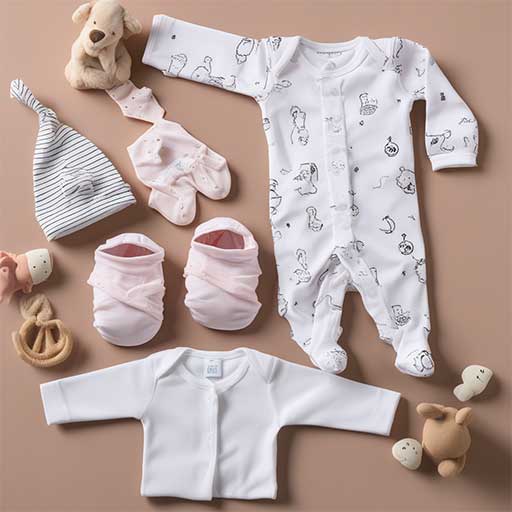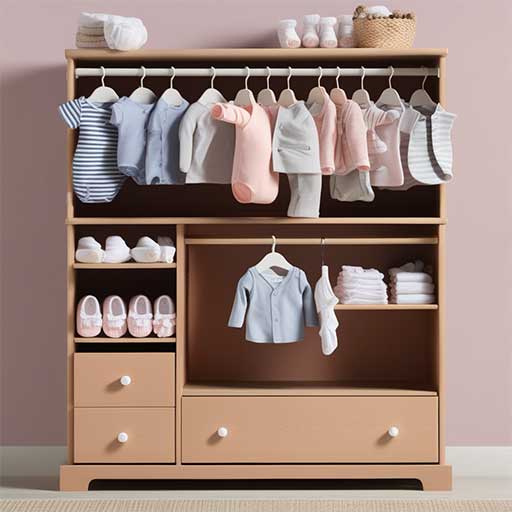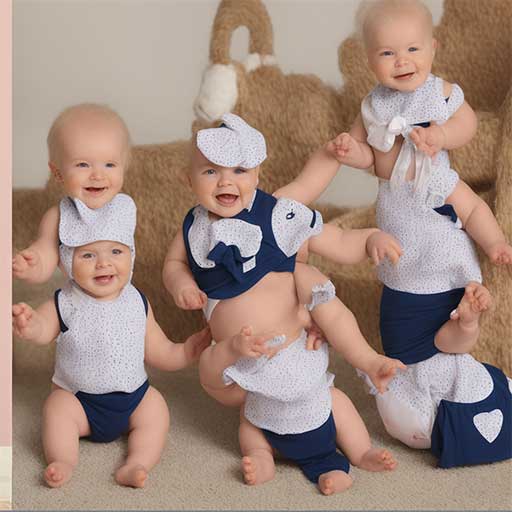When to Move Up a Size in Baby Clothes
When shopping for baby clothes, it is important to know when to move up a size. Generally, you should look at the weight and height of your baby in relation to their age as clothing sizes can vary between brands. If your baby is at or above the upper range of average weight/height for their age on a growth chart, then it might be time to move up one size.
Additionally, if the current clothes that fit become too tight after being washed or seem uncomfortable for your baby, then moving up a size may be necessary. While some babies grow quickly and need new sizes often, others may stay in one size for longer periods of time due to slower growth rates. It is best practice when shopping for baby clothes that you buy items with roomy fits so they have enough space to grow without having to go up too many sizes at once.
As your baby grows, they will eventually outgrow their clothes. Knowing when to move up a size in baby clothes can be tricky, but it’s important that you don’t wait too long. Generally speaking, most babies need to move up a size once their clothing starts feeling snug or tight on them.
If the waistband of pants is leaving an indentation on your baby’s tummy or if sleeves and legs are significantly shorter than before, then it’s time for new clothes! It may be tempting to squeeze one more wear out of a favorite outfit, but remember: safety first!
When Should I Size Up Baby Clothes?

When it comes to sizing up baby clothes, it’s important to consider the age and weight of your baby. Generally speaking, you should size up when your baby reaches about two months old or is around 12-13 pounds in weight. If you’re unsure whether it’s time to size up, look for signs such as tightness around the neck area or sleeves that are too short.
Additionally, if the clothing has any adjustable features like snaps or buttons on the side seams, these can be helpful in extending the life of each piece by allowing for extra room as your little one grows!
What Size Do Babies Wear the Longest?

Typically, newborns wear size 0-3 months the longest because they grow quickly during their first few weeks and months. After 3 months, babies begin to fit into sizes 3-6 months and then 6-9 months around 4 – 5 months old. By 9 – 12 month of age most babies are wearing size 12 month clothing or larger.
It is important to note that there is no one “standard” size for any age group as each baby develops differently and at different speeds. Therefore it’s best to check the actual measurements on a given clothing item when shopping for new clothing instead of relying solely on the suggested ages listed with each size.
What Size Does 0 to 3 Months Fit?

0 to 3 months is a common size for baby clothing and refers to the age range of newborns up to three months. At this stage, babies are usually between 8-12 pounds in weight and 21-24 inches long. This size is designed for infants who have not yet begun crawling or walking and need extra room in the clothes they wear.
Many 0 to 3 month sized items are also made with features like expandable necklines, snaps at the bottom, and elastic waistbands that make dressing easier.
How Much of Baby Clothes Should You Have for Each Size?

When it comes to baby clothes, it is important to have enough for each size. Generally speaking, you should aim to have at least five outfits in newborn and 0-3 months sizes, four outfits in 3-6 months sizes, three outfits in 6-9 month sizes and two or three for 12 month and larger sizes. It is also worth stocking up on basic items like onesies, leggings and sleepers as these can be worn through multiple stages of growth.
Additionally, don’t forget about accessories such as hats, bibs and socks – having a few extras handy will help keep your little one comfortable during their early wardrobe changes!
BABY CLOTHING ESSENTIALS – How many of each, How to dress a baby & more
What is Size 60 in Baby Clothes
Size 60 in baby clothes typically refers to clothes that fit babies between the ages of 6 and 9 months. This size usually corresponds with a weight range of 22-24 lbs and a height range of 28-30 inches. When shopping for this size, look for items labeled as “6-9M” or “60”.
Newborn Vs 0-3 Months Size
When it comes to clothing sizes for babies, there is a big difference between newborn and 0-3 months. Newborn sizes are designed specifically for babies who are less than 8 lbs., while 0-3 month size clothes typically fit babies up to 12 pounds or longer.
In terms of length, newborns measure up to 21 inches long while 0-3 months averages around 24 inches in length. It’s important to keep these size differences in mind when shopping for baby clothes; you want your little one to be comfortable and safe!
When Do Babies Wear 3-6 Month Clothes

When it comes to clothing your baby, you’ll want to pay attention to the size of their clothes. Most babies will fit into 3-6 month size garments around two months old, although some may still be too small for this size at that point. It’s best to check sizing charts and try on different sizes until you find one that fits properly and comfortably.
What is Size 90 in Baby Clothes
Size 90 in baby clothes is a standard size for infants and toddlers. It is equivalent to 24 months, so it fits babies aged two years old, though some brands may vary slightly. Size 90 usually covers chest measurements of 20 inches, waist measurements of 19 inches, and length measurements of 28-29 inches.
When shopping for clothing in this size range, it’s important to look at the specific brand’s sizing chart before making a purchase so you can be sure that the item will fit your child correctly.
Conclusion
In conclusion, it is important to pay close attention to your baby’s growth and development so that you can know when the right time is for moving up a size in their clothing. It is also beneficial for parents to consider factors such as seasonality and fabric stretchiness when making this decision. Ultimately, finding the perfect fit of clothing for your child will ensure they look great while still being comfortable throughout different stages of growth.

Hi, Musette Beaulieu here. Being a full time housewife makes me a geek for washing and drying clothes. Who doesn’t love fresh smelled clothes? Carry on with me, I hope you get what you seek in this clothes drying journey.
